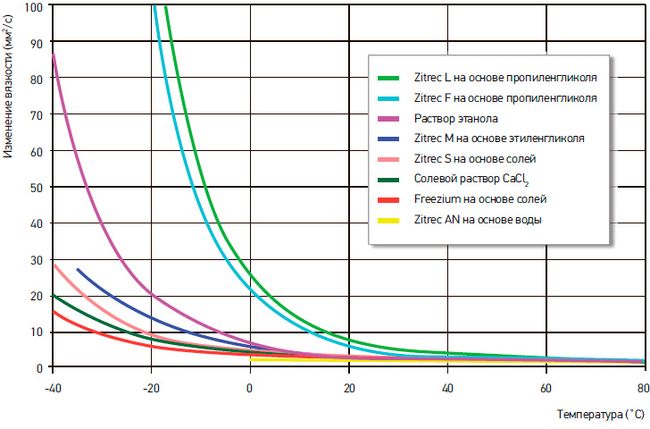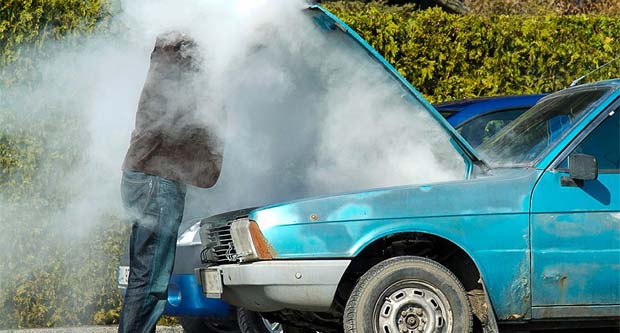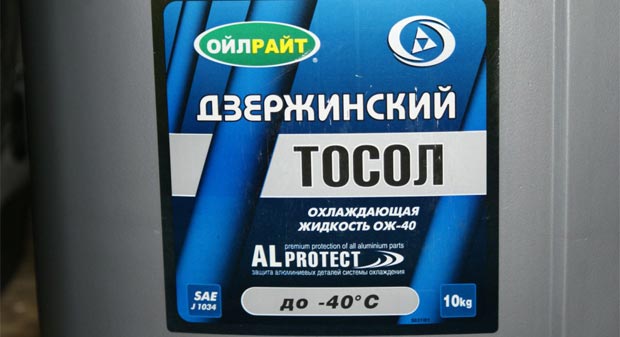
The boiling point of antifreeze. Compare with antifreeze
Content
A bit of physics
It is incorrect to talk about the boiling point of antifreeze in the specifics of antifreeze, because, firstly, antifreeze has a certain chemical composition, and its thermophysical characteristics are determined not only by temperature, but also by pressure. Secondly, antifreeze, which at one time was created exclusively for domestically produced engines, contains additives that ensure not only the operation of the car at low temperatures, but also its protection from a number of adverse factors:
- corrosion;
- amount;
- cavitation.
Antifreeze, unlike antifreezes, does not have a lubricating effect, and wear reduction is achieved due to a decrease in the temperature of the moving elements of the drive, with an increase in which gaps are selected, and the friction coefficient naturally increases.


If everything is more or less clear with the permissible temperature (no more than 90ºC), then the situation with the pressure in the engine is more complicated. To protect the engine from overheating, antifreeze is pumped at elevated pressures, which also affects the temperature of the liquid. For most brands, the actual pressure in the cylinder block is at least 1,2 ... 1,3 atm: it is then, according to the Clausius law, that the temperature maximum required for the boiling of liquid media increases. Thus, the theoretically permissible boiling point of coolants can be 110…112ºC.
What is the boiling point of antifreeze?
Overheating in engines of such popular cooling media as Felix A40, Motul, Alaska and others is associated with an insufficient amount of antifreeze, a malfunction of the engine ventilation system, the appearance of an air lock, a malfunction of the cooling system, or the use of low-quality refrigerant (diluted, spent, etc.). Talking about the boiling point of antifreeze is possible only for those car owners who allow a significant excess of coolant pressure and its excess volume in the cooling system. Another thing is the use of antifreeze-like liquids instead of antifreeze (purchased at dubious car markets). Those can really boil, and even at temperatures of 90ºC.


Thermophysical properties of antifreezes of domestic production
In Russian-made engines, it is advisable to use antifreezes of the Phoenix, Sintec and the like brands. Their performance limits are as follows:
- For A40M antifreeze: -40… + 108ºC.
- For A65M antifreeze: -65… + 108ºC.
- For A60M antifreeze: -60… + 105ºC.
- For antifreeze TL-30 Premium: -30…+108ºC.
At temperatures in the engine higher than those indicated, the antifreeze boils.


The coefficient of volumetric expansion of antifreeze is within 1,09 ... 1,12. Other indicators are determined by the technical requirements of GOST 28084-89.
The possible boiling point of antifreeze is also estimated by the pressure value:
- At P = 1 at Tbale = 105ºWITH;
- At P = 1,1 at Tbale = 109ºWITH;
- At P = 1,3 at Tbale = 112ºC.
The main producer of antifreezes in the country is PKF "MIG and Co" (Dzerzhinsk, Nizhny Novgorod region).


Watch this video on YouTube

